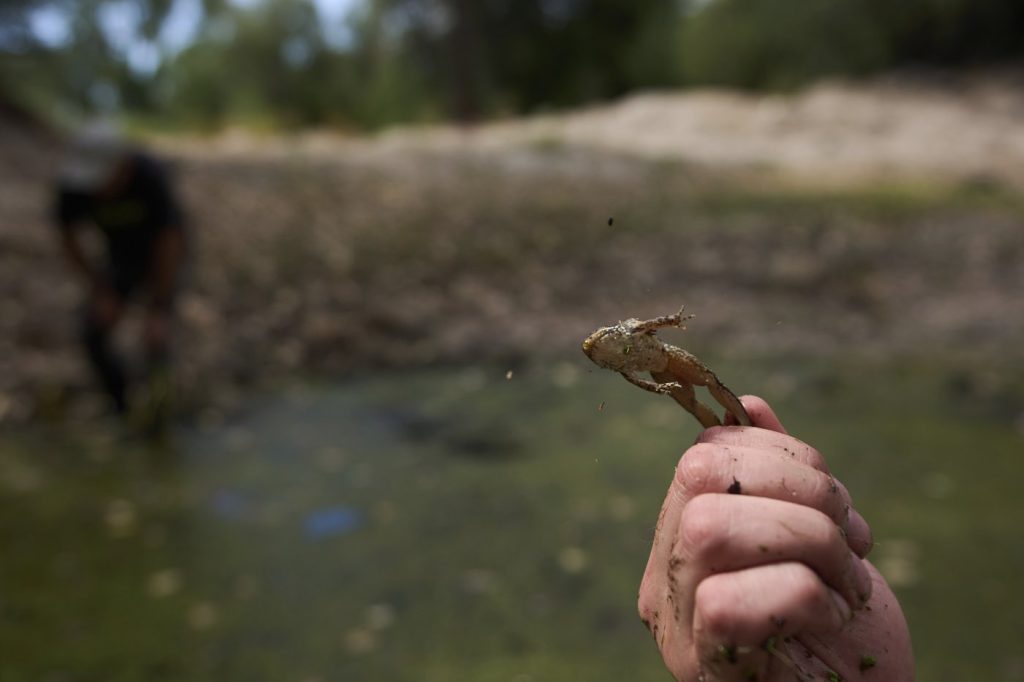The Santa Rosa Plateau Ecological Reserve in California is witnessing significant conservation efforts aimed at restoring the nearly extinct red-legged frog in its historical Southern California habitat. In a collaborative initiative along the U.S.-Mexico border, conservationists have faced challenges posed by COVID-19 restrictions but have continued to work diligently. Scientists successfully collected frog eggs from a small population located in Baja California, Mexico, and subsequently introduced them into American ponds. This innovative approach has seen the successful hatching of the eggs, and notably, the frogs have begun to breed, marking a pivotal achievement in ecosystem restoration.
Prominent figures in the conservation efforts, such as herpetologist Bennet Hardy, are actively engaged in monitoring the froglets in the restoration ponds. On August 11, 2025, Hardy was photographed holding a leaping red-legged froglet at a restoration site on a ranch outside of El Coyote, Mexico. This ranch serves as a critical location for the cross-border initiative aimed at reinvigorating the native species in both Baja California and Southern California. The collaboration has involved not only biologists from both nations but also advanced technologies, such as artificial intelligence, to track the frogs' development and breeding success.
In various captivating images captured by Gregory Bull, the Associated Press photographer, scientists from both Mexico and the United States can be seen conducting fieldwork at these restoration ponds. On the same day, Hardy was also tasked with measuring a red-legged froglet, which showcases the level of detail and care professionals are dedicating to understanding and nurturing this species. In another instance, Hardy was observed reaching for a red-legged froglet within the same pond, underlining the hands-on nature of conservation efforts being undertaken.
Additionally, herpetologist Brad Hollingsworth was seen managing a container of red-legged frogs at the San Diego Museum of Natural History on August 13, 2025. His work involves utilizing data from the museum's extensive collection to guide the cross-border efforts for species restoration. This indicates a comprehensive and multi-faceted approach to conservation, as historical data can play a crucial role in enhancing the reintroduction strategies being implemented.
A key technological aspect of these conservation efforts includes microchipping the froglets for monitoring purposes. On August 11, Bennet Hardy, along with biologist Jorge Valdez, was photographed as they executed this task, emphasizing the blend of biology and technology in current conservation practices. The efforts indicate the importance of tracking individual froglets to assess their survival and reproductive success post-release.
Despite the logistical challenges presented by the ongoing pandemic, the determination of conservationists to work on this critical project has paid off. The ongoing monitoring and documenting of the red-legged frogs and their habitats represent a commitment to revitalizing Southern California's ecosystems. As professionals like Adam Backlin continue to search for both red-legged frogs and their eggs, the stakes in these restoration efforts remain high. The initiative not only aims to boost the frog population but also seeks to establish stable and thriving ecosystems in the region through sustainable practices and cross-border collaboration.










